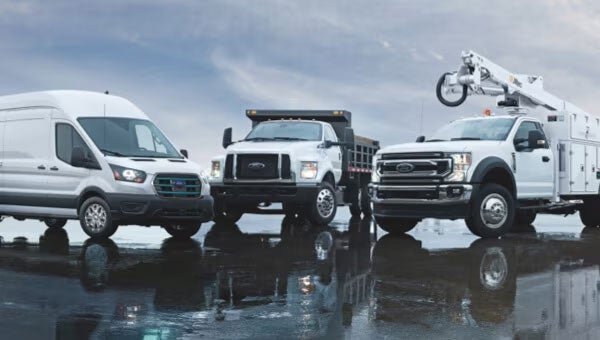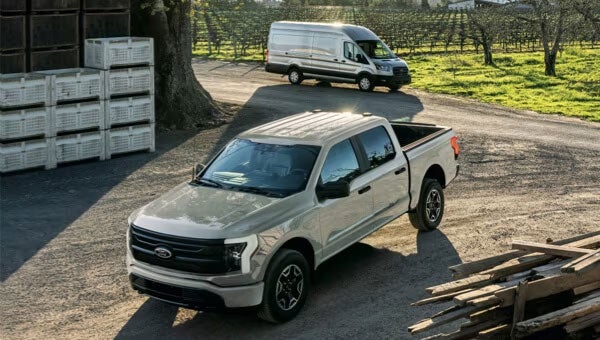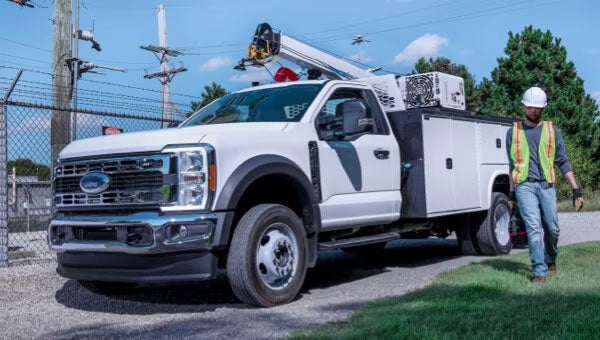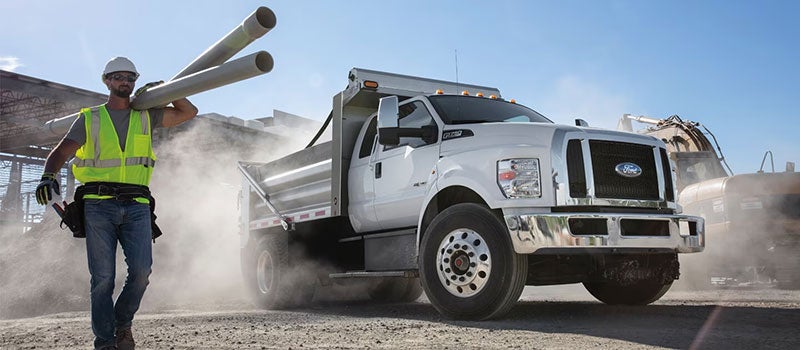Light, Medium, & Heavy Duty Truck Classifications

Whether you’re a small business owner with a single vehicle or you’re responsible for maintaining a large fleet, it’s only natural that Ford commercial trucks have caught your attention. After all, the Ford commercial truck lineup is certainly the most diverse in the industry with options to suit the needs of virtually any type of business or industry. However, navigating the sheer amount of choices can be overwhelming at first.
That’s where our team at Sarchione Ford of Alliance comes in! We’ve created this handy reference guide that covers the key differences between light, medium, and heavy duty classifications for commercial trucks. You’ll learn all about their various capabilities, weight ratings, and much more in order to help you make an informed buying decision. Our team of commercial truck experts are standing by to help you choose the right Ford commercial truck or van for your business today!

Commercial Truck Classes Explained
Before we dive into the differences between light, medium, and heavy duty trucks – it’s important to understand the different types of truck classes. Ranging from Class 1 to Class 8, these classes are separated by Gross Vehicle Weight Rating (GWVR). GVWR is the maximum weight that a vehicle can safely handle. It includes the weight of the vehicle itself along with its payload capacity including both cargo and passenger weight. This number is listed on a label inside the door on the driver’s side. Below, you’ll find a quick breakdown of each class along with the corresponding Ford trucks that occupy a particular class. Please note that there is some overlap between models when considering many are available as both cab/chassis and complete models.
- Class 1 - GVWR 0 to 6,000 pounds (Ford Maverick and Ford Ranger)
- Class 2 - GVWR 6,001 to 10,000 pounds (Ford F-150 and Ford F-250 Super Duty)
- Class 3 - GVWR 10,001 to 14,000 pounds (Ford F-350 Super Duty)
- Class 4 - GVWR 14,001 to 16,000 pounds (Ford F-450 Super Duty)
- Class 5 - GVWR 16,001 to 19,500 pounds (Ford F-550 Super Duty)
- Class 6 - GVWR 19,501 to 26,000 pounds (Ford F-650 Super Duty)
- Class 7 - GVWR 26,001 to 33,000 pounds (Ford F-750 Super Duty)
- Class 8 - GVWR Over 33,000 pounds (Semi Trucks)
Light Duty vs Medium Duty vs Heavy Duty Trucks

Light Duty Trucks
Class 1, Class 2, and Class 3 trucks are each considered light duty trucks. This includes models like the compact Ford Maverick, midsize Ford Ranger, and full-size Ford F-150. Select Ford F-250 Super Duty models may fall into this category as well, depending on configuration. Although they make up the light duty segment, these models are still ready to work as hard as your business demands. They’re great options for light duty tasks such as commuting, delivery, field research, landscaping, painting, trades, and much more.

Medium Duty Trucks
Medium duty trucks include Class 4, Class 5, and Class 6 trucks. If your business or trade requires greater capability or muscle, Ford medium duty trucks offer the perfect solution with a virtually limitless range of upfitter options. For example, landscaping or construction businesses can choose a dump body while other delivery services can select a box truck option to expand their productivity. Sitting in the middle of the commercial truck range, medium duty trucks represent a combination of affordability and capability.

Heavy Duty Trucks
For those who need maximum power and capability, heavy duty trucks include classes 7 and 8 along with tractor-trailers. Since these trucks have the highest GVWRs, it’s also important to remember that federal and state regulations may dictate if you need a CDL (commercial driver’s license) in order to legally operate these trucks. CDLs are broken down into three classes - class a, class b, and class c. You can typically expect to have at least a class b license in order to operate a heavy duty truck. Examples of heavy duty trucks can include three-axle tractor-trailers or simple-unit dump trucks with a GVWR that exceeds 33,000 pounds.




